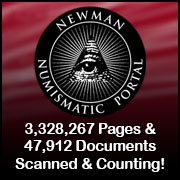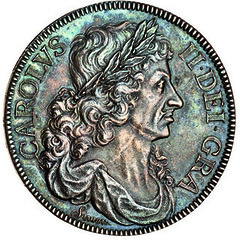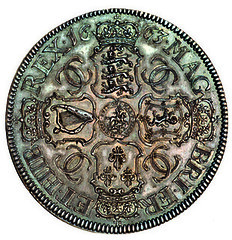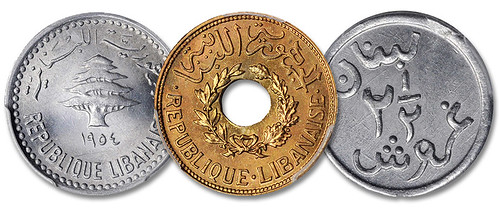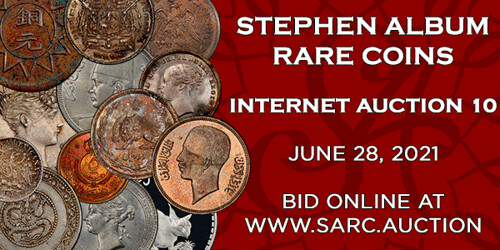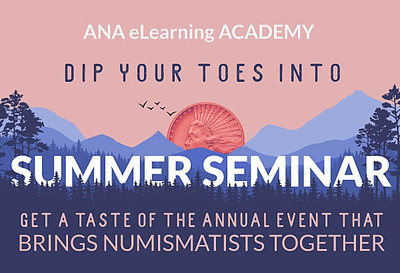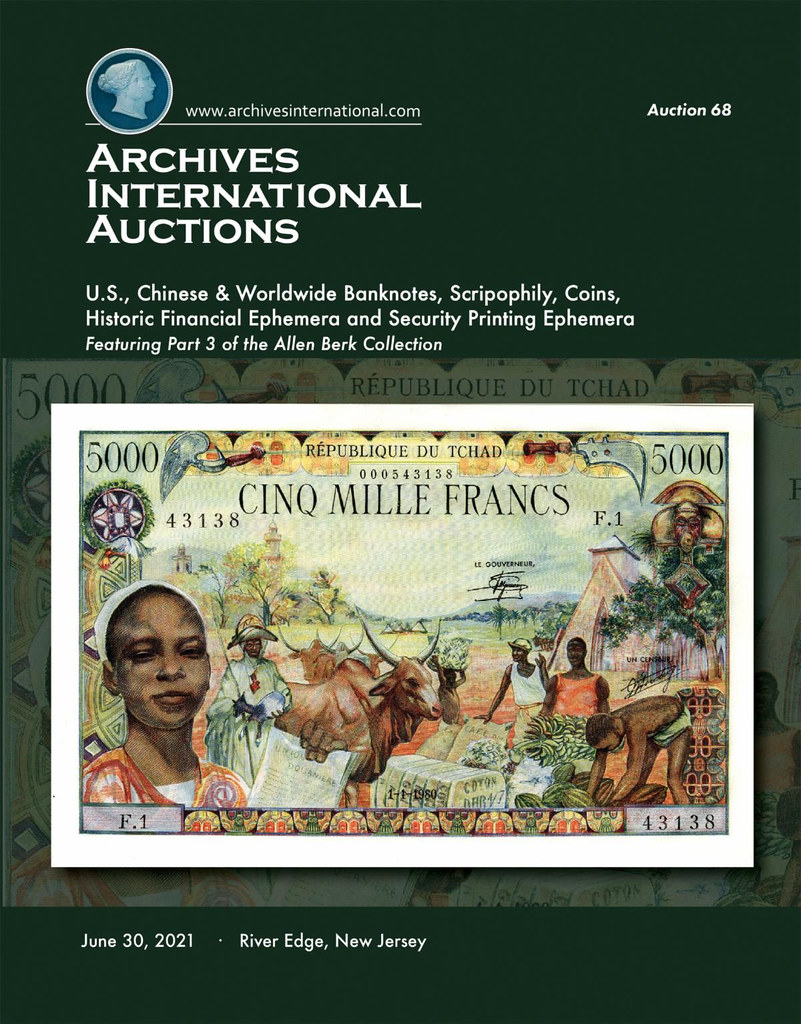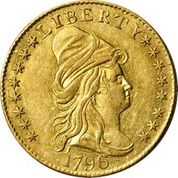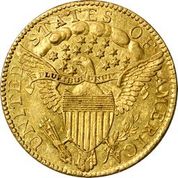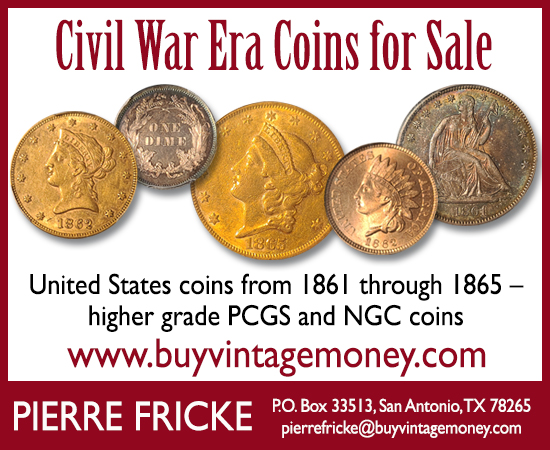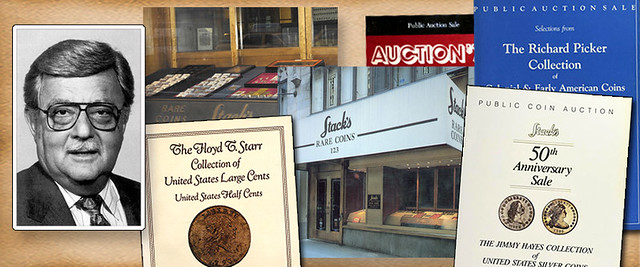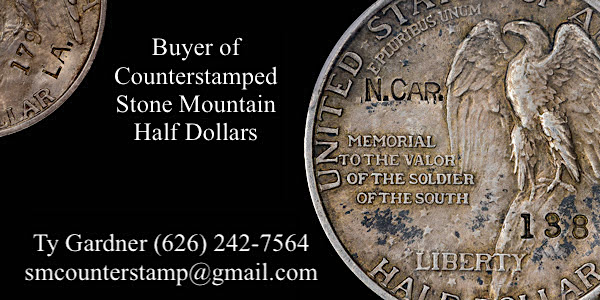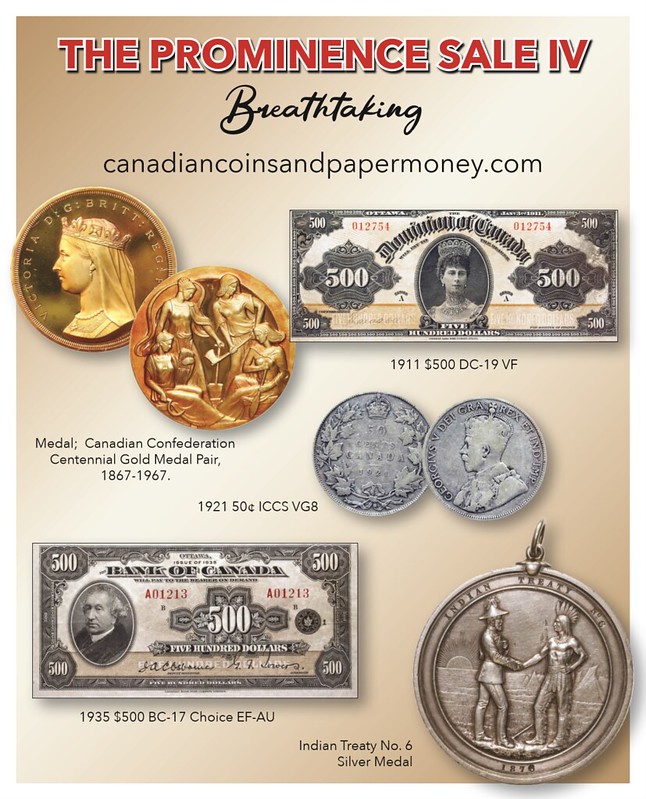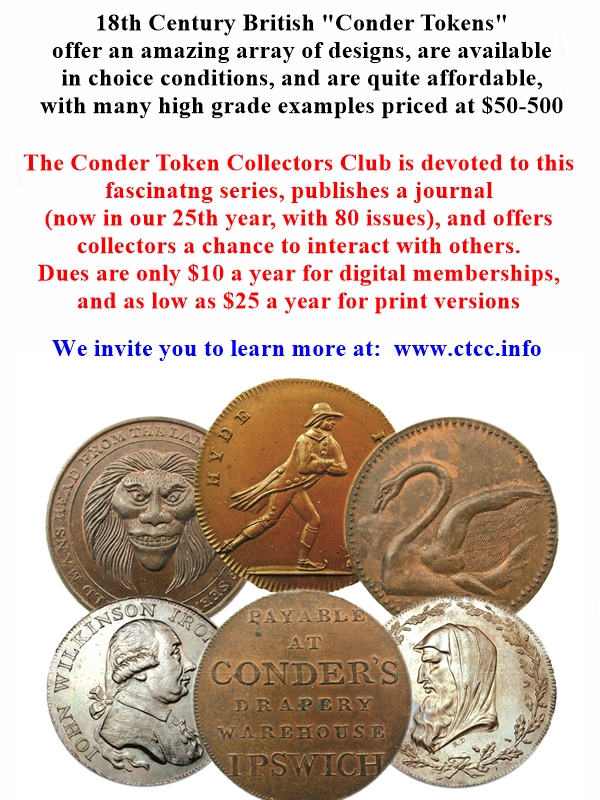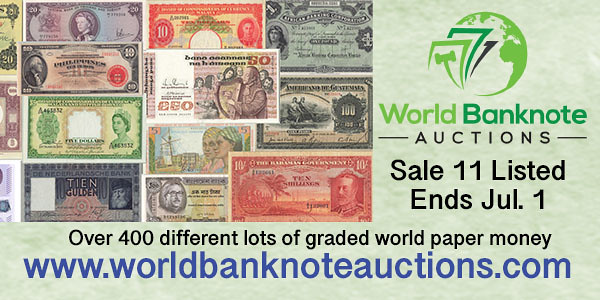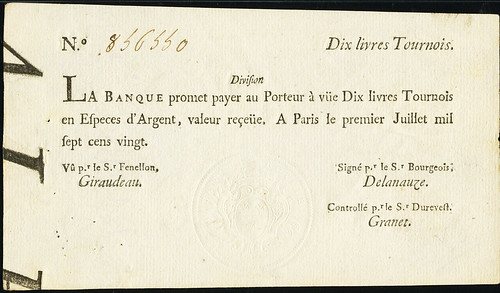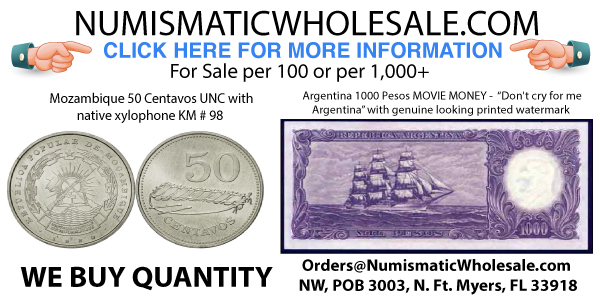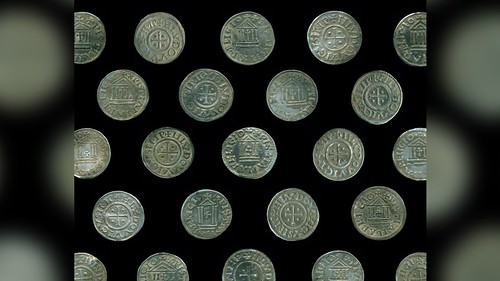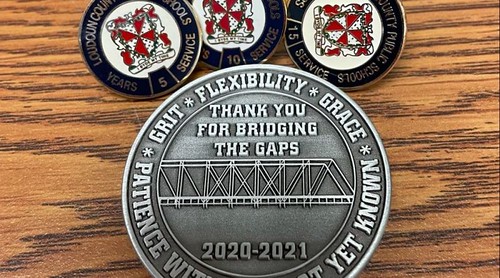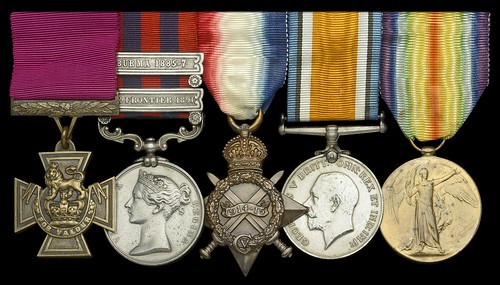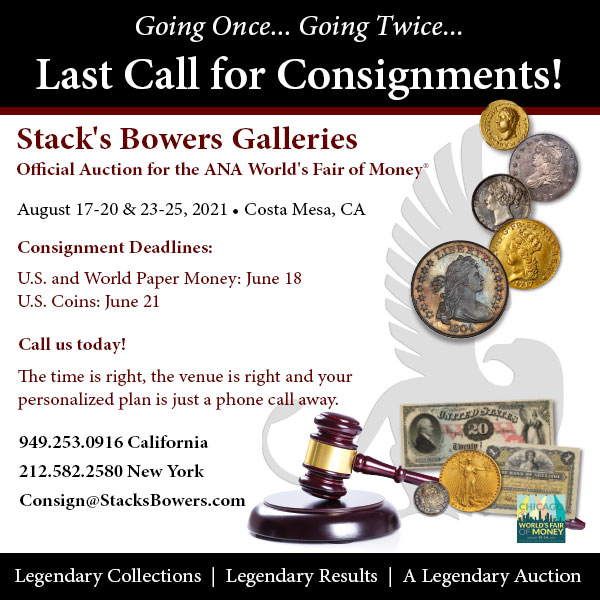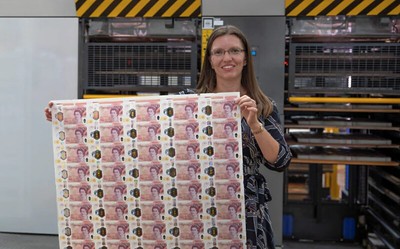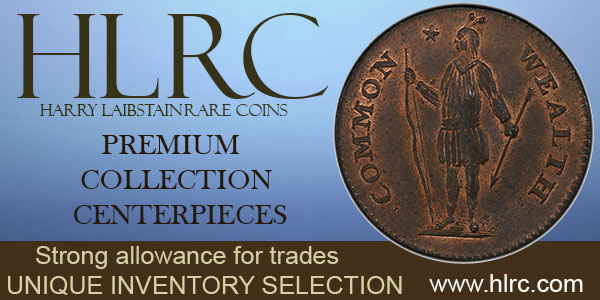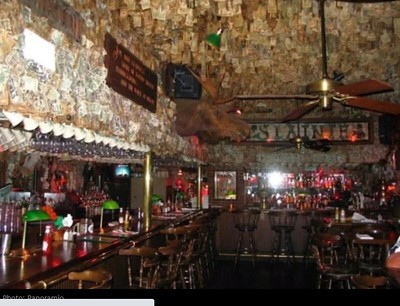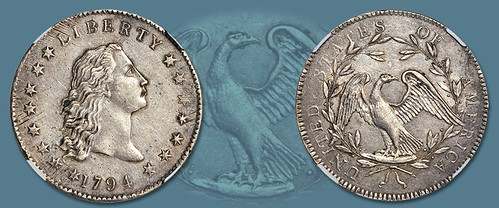
Visit our NBS Sponsors


About UsThe Numismatic Bibliomania Society is a non-profit association devoted to the study and enjoyment of numismatic literature. For more information please see our web site at coinbooks.org SubscriptionsThose wishing to become new E-Sylum subscribers (or wishing to Unsubscribe) can go to the following web page link MembershipThere is a membership application available on the web site Membership Application To join, print the application and return it with your check to the address printed on the application. Print/Digital membership is $40 to addresses in the U.S., and $60 elsewhere. A digital-only membership is available for $25. For those without web access, write to: Charles Heck, Treasurer AsylumFor Asylum mailing address changes and other membership questions, contact Chuck at this email address: treasurer@coinbooks.org SubmissionsTo submit items for publication in The E-Sylum, write to the Editor at this address: whomren@gmail.com BUY THE BOOK BEFORE THE COINSale CalendarWatch here for updates! |
- WAYNE'S WORDS: THE E-SYLUM JUNE 20, 2021
- HELP SIMULCAST ANA EVENTS!
- NEW BOOK: CHASING THE THRILL
- NNP MINT DIRCTOR DANIEL FOX CORRESPONDENCE
- VIDEO: COLLECTING WITH DAD
- THOMAS SIMON'S EDGE LETTERING
- 1840 EMMITSBURG, MD SCRIP
- NOTES FROM E-SYLUM READERS: JUNE 20, 2021
- THE FOUNDATION FOR NUMISMATIC EDUCATION
- ANA SUMMER SEMINAR FREE VIRTUAL CLASSES
- 2021 CINCINNATI EXPO EDUCATIONAL PROGRAMS
- VOCABULARY TERM: ELECTROTYPE
- 1796 QUARTER EAGLE EX-ELMER SEARS
- ELMER SNOW SEARS (1874-1937)
- ERWIN G. WARD (1849-1920)
- HARVEY STACK'S NUMISMATIC FAMILY, PART 98
- W.L. ORMSBY, PART ONE
- MAXWELL E. BRAIL (1910-1992)
- MORE COLTRANE COLLECTION PART 2 SELECTIONS
- STEPHEN ALBUM RARE COINS AUCTION 40 RESULTS
- STEPHEN ALBUM JUNE 2021 E-AUCTION 10
- ARCHIVES INTERNATIONAL AUCTION 68
- DAVISSON'S E-AUCTION 40
- NUMISMATIC NUGGETS: JUNE 20, 2021
- WAYNE'S NUMISMATIC DIARY: JUNE 20, 2021
- CAROLINGIAN SILVER COIN HOARD FOUND IN POLAND
- GOLD COINS BELIEVED LOST IN THE BLACK DEATH
- ITALIAN NOBLE FAMILIES ON COINS
- TEACHERS GIVEN PANDEMIC MEMENTO TOKENS
- HERO OF MANIPUR'S VICTORIA CROSS
- THE BANK OF ENGLAND'S NEW £50 BANKNOTE
- PENSACOLA PUB DECORATED IN CASH
- LOOSE CHANGE: JUNE 20, 2021
Click here to read the thin version on the web
Click here to subscribe
Click here to access the complete archive
To comment or submit articles, reply to whomren@gmail.com
Content presented in The E-Sylum is not necessarily researched or independently fact-checked, and views expressed do not necessarily represent those of the Numismatic Bibliomania Society.
WAYNE'S WORDS: THE E-SYLUM JUNE 20, 2021
 New subscribers this week include:
Monte Bakasy,
Eric Paquet, and
Marc Verret.
Welcome aboard! We now have 6,635 subscribers.
New subscribers this week include:
Monte Bakasy,
Eric Paquet, and
Marc Verret.
Welcome aboard! We now have 6,635 subscribers.
Thank you for reading The E-Sylum. If you enjoy it, please send me the email addresses of friends you think may enjoy it as well and I'll send them a subscription. Contact me at whomren@gmail.com anytime regarding your subscription, or questions, comments or suggestions about our content.
This week we open with a plan to simulcast events from the ANA convention, one new book, updates from the Newman Numismatic Portal, notes from E-Sylum readers, and more.
Other topics this week include the ANA Summer Seminar, the Greater Cincinnati Coin Expo, electrotypes, Elmer Sears, W. L. Ormsby, Max Brail, auction previews, my numismatic diary, some interesting coin hoards, pandemic challenge coins, and a money-covered Penacola pub.
To learn more about Forrest Fenn's treasure, Mint Superintendent Daniel M. Fox, Thomas Simon's edge lettering, The Coin Collector, the Foundation for Numismatic Education, the Warrington Faker, Sherwood Boyd, the Republic of Texas, C.B. Miller's Restaurant, and whirling dervishes, read on. Have a great week, everyone!
Wayne Homren
Editor, The E-Sylum
HELP SIMULCAST ANA EVENTS!
NBS Vice President Len Augsburger has a request for readers; please consider subscribing to a YouTube channel so that NBS and other clubs can live stream meetings from this summer's American Numismatic Association's World's Fair of Money. -Editor
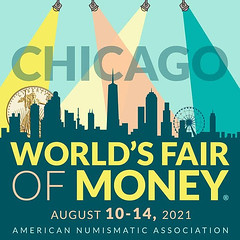 Lianna Spurrier plans to live stream a number of ANA convention events, including the NBS meetings. This will allow those who cannot attend to watch live from home. However, Lianna needs to reach the one thousand subscriber mark on YouTube in order to take advantage of their streaming services.
Lianna Spurrier plans to live stream a number of ANA convention events, including the NBS meetings. This will allow those who cannot attend to watch live from home. However, Lianna needs to reach the one thousand subscriber mark on YouTube in order to take advantage of their streaming services.
Please subscribe to Lianna's YouTube channel (which is free, and contains excellent numismatic content) if you wish to help push us over the mark.
Link to subscribe to Lianna Spurrier's YouTube channel (click on Subscribe
to the right):
https://www.youtube.com/channel/UCSq910l_o8m5PbXWXuGNZQg?view_as=subscriber
NEW BOOK: CHASING THE THRILL
This week the Wall Street Journal reviewed a new book on the crazy saga of Forrest Fenn's hidden treasure. -Editor
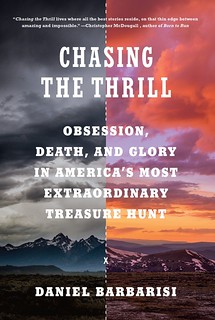 Reading Daniel Barbarisi's
Reading Daniel Barbarisi's Chasing the Thrill: Obsession, Death, and Glory in America's Most Extraordinary Treasure Hunt
might feel a bit like watching a Discovery Channel documentary, but the book is quite a yarn. In fact, it's an exhaustive account of one of the oddest episodes in the crowded annals of bizarro Americana.
The impresario of Chasing the Thrill
is Forrest Fenn, a former Vietnam War fighter pilot who made a fortune peddling Native-American artifacts and other works in arty Santa Fe, N.M. As we learn from Mr. Barbarisi, a former Wall Street Journal sportswriter and the author of an earlier book on fantasy-sports gambling, Fenn, at age 80, got the notion to hide a treasure chest in the rough country north of Santa Fe. He then printed a slim autobiography called The Thrill of the Chase,
whose final chapter released his poetic arrows into the public imagination—verses containing nine gnomic pointers to the whereabouts of the trove of 265 gold coins, dozens of gold nuggets, plastic baggies of gold dust, a block of $1,000 bills, plus rare Mayan relics, Chinese jade and more. The 42-pound cache—secreted in a smallish 12th-century Italian lock box—was valued at up to $2 million.
NNP MINT DIRCTOR DANIEL FOX CORRESPONDENCE
Newman Numismatic Portal intern Garrett Ziss provided the following article based on recently added digital content. Thanks! -Editor
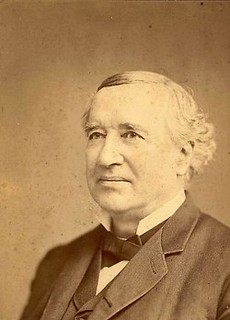 At an age when many people are ready to retire, 66-year-old
Daniel M. Fox was appointed Superintendent of the United
States Mint by President Grover Cleveland on June 19, 1885. His
prior tenure as the Mayor of Philadelphia gave him valuable
experience for this demanding position. He oversaw operations
at the Mint until November 1, 1889 and also fielded questions
and requests from the public during this period.
At an age when many people are ready to retire, 66-year-old
Daniel M. Fox was appointed Superintendent of the United
States Mint by President Grover Cleveland on June 19, 1885. His
prior tenure as the Mayor of Philadelphia gave him valuable
experience for this demanding position. He oversaw operations
at the Mint until November 1, 1889 and also fielded questions
and requests from the public during this period.
The National Archives include correspondence with
Superintendent Fox on a wide range of topics. Several of these
letters, recently transcribed by the Newman Portal, reveal the
interest that teachers and students had in U.S. coinage at that
time. For example, Principal James Jenkins of the Six Street
School is Worcester, Massachusetts, questioned whether copper, silver and gold expand in passing from the liquid to the solid state; and will the solid metal, when cast, float in the liquid metal?
Other educators were more curious about the specific denominations produced at each U.S. Mint branch and also how the coins were distributed once they left the Mint.
VIDEO: COLLECTING WITH DAD
These are selections from the David Lisot Video Library that feature news and personalities from the world of coin collecting. David has been attending coin conventions since 1972 and began videotaping in 1985. The Newman Numismatic Portal now lists all David's videos on their website at:
https://nnp.wustl.edu/library/multimediadetail/522852
Here's one for Father's Day! -Editor
Being with Your Dad Can Be the Best Part of Coin Collecting.
VIDEO: 3:43.
Christopher & Matthew Wiley, Coin Collectors,
David Lisot, Interviewer, CoinTelevision.com. May 6-8, 2021.
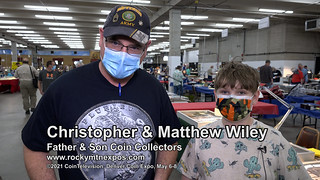 Coin collecting involves history, finances, acquisition, possession and time. It can also involve fraternization and companionship. Being together with your son or daughter while coin collecting can create some great times and memories. Hear from a father and son collecting team who seem to have understood that message.
Coin collecting involves history, finances, acquisition, possession and time. It can also involve fraternization and companionship. Being together with your son or daughter while coin collecting can create some great times and memories. Hear from a father and son collecting team who seem to have understood that message.
An excerpt of the video is available for viewing on the Coin Television YouTube Channel at:
https://youtu.be/aRzHt7xkbVI
THOMAS SIMON'S EDGE LETTERING
Gil Parsons submitted these notes on Thomas Simon's Petition and Reddite crowns. Thanks! -Editor
With regard to the brief description of edge lettering in the last issue of the E-Sylum, it might be worthwhile to mention two of the most famous examples of edge lettering: Thomas Simon, arguably the greatest English coin and medal engraver of the seventeenth century and Chief engraver of the Mint under both Cromwell and (briefly) at the Restoration, pioneered a technology for edge lettering, a significant contribution in the transition from hammered to milled coinage. One of these, the "Reddite Crown", so named for its edge lettering "Reddite quae Caesaris Caesari &ct" [Render unto Caesar, that which is Caesar's, etc], which includes in addition to the lettering an image, sold this March at Spink for an astonishing £396,000 (against an estimate of £100,000 -£120,000)!
1840 EMMITSBURG, MD SCRIP
Dave Hirt writes:
"Here is a clip from the Frederick News-Post 100 years ago: "that paper money was issued by Frederick County towns 80 years ago was shown by John A. Horner of Emmitsburg. He has three notes issued by the Corporation of Emmitsburg in 1840. One is dated 5/5/1840 is for 25 cents, one dated 5/25/1840 is for 6 1/4 cents, and one dated 5/28/1840 is for 50 cents.."
"Interesting, I must have 20-25 books of different states' paper money, but not my own state of Maryland."
NOTES FROM E-SYLUM READERS: JUNE 20, 2021
The Oil-Pouring Skill Test CoinTed Puls writes:
"While I was in college I offered a Lebanese classmate a few Lebanese coins that I had. He only wanted the holed 5 C denomination. I was surprised that he wanted the smallest and least picturesque coin. He explained that in his village the oil dealer had to prove his skill before selling oil, by pouring the oil through the small hole in the coin and this reminded him of home. The brass coin in the newsletter reminded of this story of many years ago."
Cool story! Thanks. -Editor
To read the earlier E-Sylum article, see:
THE EARLY COINAGE OF LEBANON
(https://www.coinbooks.org/v24/esylum_v24n24a22.html)
Other topics this week include Civil War tokens, brittle Liberty Nickels, and the Avon Gold Rush stein. -Editor
THE FOUNDATION FOR NUMISMATIC EDUCATION
Yesterday I came across a used book listing for A Treatise on the Coinage of the United States Branch Mints, the groundbreaking 1893 monograph by Augustus Goodyear Heaton. For the listed price I assumed it was a reprint, but miracles do happen sometimes so I took a closer look to confirm. I expected to see the 1987 Bowers and Merena Galleries reprint, but this was listed as a 1984 reprint published by the "Foundation for Numismatic Education." I was unaware of that reprint or organization.
So I checked the Newman Numismatic Portal expecting to as least find a Coin World article on the group. I wasn't disappointed. A 1977 article noted the group's founding by "24 hobby leaders present for the first informal session." A 1980 article listed Abe Kosoff as President and Don Kagin as Executive Vice President. There are multiple mentions of the group through the mid-1980s.
NNP also houses a small archive of correspondence between the group and Eric P. Newman, mostly announcements and minutes of their annual meetings. The group was begun before my time as an active numismatist and before I regularly attended ANA conventions. Below is a meeting announcement on the group's letterhead from the NNP archive, and notes from two surviving members. -Editor
ANA SUMMER SEMINAR FREE VIRTUAL CLASSES
The ANA is opening its summer seminar classes through the ANA eLearning Academy. Here's the announcement. -Editor
Summer Seminar is a once-a-year opportunity that offers collectors a varied selection of week-long courses designed for discovery or continued study. While this year's event was cancelled due to COVID-19, free virtual courses will be offered through the ANA eLearning Academy in its place.
Topics will appeal to a broad range of collectors – from beginners to advanced numismatists – and will be presented by some of the hobby's most renowned numismatists. Courses start June 21 and will last through July 2.
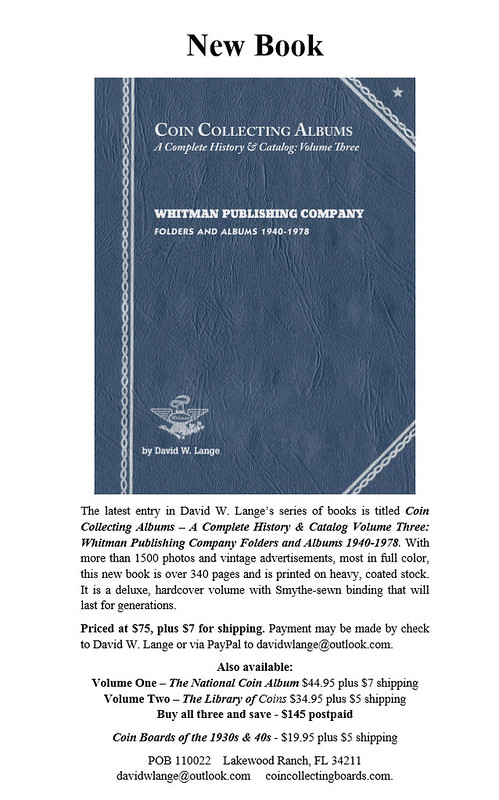
2021 CINCINNATI EXPO EDUCATIONAL PROGRAMS
For some in-person numismatic education, here's the speaker program for next month's Greater Cincinnati Numismatic Exposition. Great topics! -Editor
The Cincinnati Numismatic Association presents Educational Programs at the Greater Cincinnati Numismatic Exposition
Saturday, July 31st Starting at 10:30 am, Room 201, Sharonville Convention Center, 11355 Chester Road, Cincinnati, Ohio 45246. Each program will last 45 to 50 minutes. Admission is free.
VOCABULARY TERM: ELECTROTYPE
Here's another entry from Dick Johnson's Encyclopedia of Coin and Medal Terminology. -Editor
Electrotype. A medallic or numismatic item made by electrolysis; a galvano or electroform. An electrotype requires a mold or pattern, which must be negative to produce a positive item. It creates a shell of one side of a coin, medal or plaquette; two shells are required to make a two- sided item. To give the item a solid feel it can be filled with metal, usually lead, called a drop-in. By bringing two sides together it creates a seam around the edge, which is diagnostic of most electrotypes. The metal required of electrolysis must conduct an electric current, thus metals normally used for coins – copper, silver, gold – are also excellent to use in electroforming. While such pieces were formerly called electro in the numismatic field, the full term is used today.
1796 QUARTER EAGLE EX-ELMER SEARS
Last week we mentioned dealer Elmer Sears. Stack's Bowers Galleries Numismatic Acquisition Coordinator Ron Gillio passed along this upcoming auction lot description for a nice 1796 Quarter Eagle sold by Elmer Sears in 1926. Thanks! -Editor
1796 Capped Bust Right Quarter Eagle. Stars on Obverse. B-3. Rarity-5+. MS-62 (PCGS). This is one of the most significant and exciting offerings in this sale - a fresh Mint State 1796 Stars Obverse quarter eagle that has only recently been certified by PCGS for the first time and is making its debut in the modern numismatic market. It is a poster example of a classic early U.S. Mint gold rarity. Vivid surfaces exhibit deep olive undertones to brighter golden-apricot color, wisps of pale pinkish-rose also evident as the coin rotates under a light. The striking detail is generally bold to sharp from a nicely centered impression, and while isolated high points are a tad soft, many other features are fully rendered and crisp. Semi-reflective in the fields with a satiny texture otherwise, the surfaces are uncommonly free of sizeable marks for both the issue and the assigned grade. Remarkably fresh and original in appearance, quite unlike so many early gold coins encountered in today's market. In sum, this is a lovely coin and outstanding representative of the issue that would serve as a highlight in the finest gold cabinet. BD Die State d.
ELMER SNOW SEARS (1874-1937)
Pete Smith recently updated his American Numismatic Biographies entry for Elmer Sears. Thanks. -Editor
Sears, Elmer Snow Dealer, Collector (b. 3/13/1874 d. 9/23/1937)
Born in Fall River, Massachusetts, son of Isaiah F. Sears and Sarah A. Little. Married to Mima Carr Gray on September 11, 1905. They had one child.
Dealer in Fall River, Massachusetts. Sears conducted three auctions during 1904 to 1910 and issued a few undated fixed price lists. He later joined Wayte Raymond in the United States Coin Company. They conducted 43 auction sales during 1912 to 1918. In 1914 he exhibited early gold coins at the ANS. In 1918 he retired and Raymond began to conduct business under his own name. Sears placed his stock with B. Max Mehl for auction.
He was a 32nd degree Mason. He died at home in Swansea, Massachusetts and is buried at Christ Church Cemetery in Swansea, Massachusetts.
The findagrave site shows his year of death as 1957. This is an obvious error. The headstone shows 1937.
ERWIN G. WARD (1849-1920)
Here's another entry from the online draft of John Lupia's book of numismatic biographies. Thanks! This is an excerpt with the full article and bibliography available online. This week's subject is Massachusetts collector and early ANA member Erwin G. Ward. -Editor
Erwin G. Ward (1849-1920), Palmer, Massachusetts; Superintendent, Hampden Truant School, Springfield, Massachusetts. Photo on the 33rd leaf verso in Philatelic West, Vol. 35, No. 2, February (1907). Later moved to 398 Pleasant Street, South Weymouth, Massachusetts.
He was born in 1849 in Massachusetts. In his youth he lived on a farm and became a bird egg collector. Later on he began collecting foreign coins. Later on still he began collecting CSA paper money using Dr. George Massamore's catalogue for a guide. He also amassed an Indian relic collection of artifacts from every state.
HARVEY STACK'S NUMISMATIC FAMILY, PART 98
The latest article in Harvey Stack's blog series continues with the year 1985, including the Sherwood Boyd sale. Check out the World Trade Center towers on the cover. -Editor
The fact that 1985 was 50th anniversary year of presenting public auctions attracted consignments, and we started in January with the vast collection from the Estate of Joseph Bellini. Joseph was a wonderful collector and a friend to all who loved numismatics as he did. He had built a comprehensive collection of 20th century coins from small cents to silver dollars, mostly in choice and gem Mint State. He had a selection of minor Proof sets (as sold by the Mint) from 1878 to 1900. He also built a complete set of gold dollars, along with a large group of other gold coins from quarter eagles to $20 gold. It was a great way to start our anniversary year.?
W.L. ORMSBY, PART ONE
Susan Bremer of Heritage published the first of a series of articles about engraver, author and publisher W.L. Ormsby. It appeared in the June 18, 2021 issue of the Heritage Currency News email. -Editor
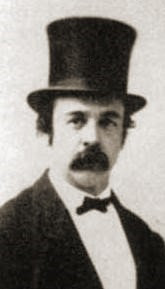 Engraving, inventing, and writing are just a few of the endeavors that W.L. Ormsby has been known for. A complex man, whom some have observed had his head more in the clouds than his feet on the ground. He is one of the most famous and infamous names in banknote engraving. W. L Ormsby was and still is a conundrum of a man.
Engraving, inventing, and writing are just a few of the endeavors that W.L. Ormsby has been known for. A complex man, whom some have observed had his head more in the clouds than his feet on the ground. He is one of the most famous and infamous names in banknote engraving. W. L Ormsby was and still is a conundrum of a man.
W. L. Ormsby was born September 9, 1809 in Hampton, Connecticut. Little is known about his early years, other than that he was apprenticed to an engraver in 1825. In 1829, he went to New York to hone his skills at the National Academy of Design. In the several years after graduation, he and his family moved to Albany and Rochester, New York where he engraved under his own name. Later he moved to Lancaster, Pennsylvania, where Ormsby went to work for Carter, Andrews & Co.
MAXWELL E. BRAIL (1910-1992)
Last week Craig Whitford introduced us to the Max Brail Canadian medal collection being offered by Marc Verret & Eric Paquet at The Canadian Numismatic Company. The pair kindly forwarded the below photo and bio of Max from the catalog. They've also placed an ad in this issue with more highlights from the sale. Be sure to click on it or follow the link below to see more great lots on offer. -Editor
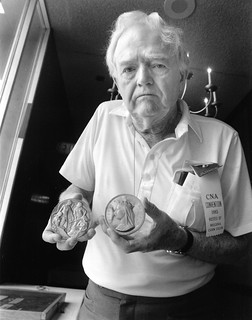 Maxwell E. Brail, 1910-1992 Mr. Max Brail, a lifetime collector with a keen passion and enthusiasm for his collecting, often demonstrated through his openness in sharing his achievements and knowledge through his many presentations, exhibitions and writings at various exhibitions and local shows. He began his life in 1910 in a small Michigan town known as Greenville. As a young man he located to Jackson, Michigan and worked in the dry-cleaning business as a driver and salesman. In a few short years he would own his own dry-cleaning operation. In 1937 he married Lucille and she would accompany him on most of his numismatic journeys throughout their lifetime. With his success in business, he built and leased a McDonald's in Jackson.
Maxwell E. Brail, 1910-1992 Mr. Max Brail, a lifetime collector with a keen passion and enthusiasm for his collecting, often demonstrated through his openness in sharing his achievements and knowledge through his many presentations, exhibitions and writings at various exhibitions and local shows. He began his life in 1910 in a small Michigan town known as Greenville. As a young man he located to Jackson, Michigan and worked in the dry-cleaning business as a driver and salesman. In a few short years he would own his own dry-cleaning operation. In 1937 he married Lucille and she would accompany him on most of his numismatic journeys throughout their lifetime. With his success in business, he built and leased a McDonald's in Jackson.
In the late 1920s he began actively collecting United States coins purchasing items he desired from the Chapman Brothers, B. Max Mehl, Albert Grinnell and other well-known dealers, and auction houses as well as U.S. commemoratives directly from the issuing authorities. During this time his primary collecting interest was United States coinage and Michigan National Bank Notes.
MORE COLTRANE COLLECTION PART 2 SELECTIONS
Bruce Hagen and Maureen Levine cataloged the Mike Coltrane Collection Part 2 for Heritage, with assistance from Bob Moon and Frank Clark. They submitted this additional selection of highlights. Thanks! -Editor
The Mike Coltrane Collection Part 2 Sale
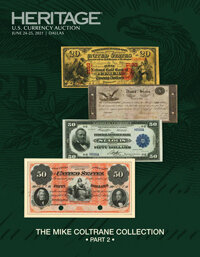 There are many artistic and historical American and related currency notes cataloged in The Mike Coltrane Collection Part 2 sale. This cabinet was formed over the past several decades with diligence, acumen, and an appreciation of the inter-relationships of the notes contained. The majority offered in the sale were obtained long ago, prior to the establishment of grading services, and are certified for the first time. They will be sold unreserved by Heritage Auctions on June 24-25, 2021.
There are many artistic and historical American and related currency notes cataloged in The Mike Coltrane Collection Part 2 sale. This cabinet was formed over the past several decades with diligence, acumen, and an appreciation of the inter-relationships of the notes contained. The majority offered in the sale were obtained long ago, prior to the establishment of grading services, and are certified for the first time. They will be sold unreserved by Heritage Auctions on June 24-25, 2021.
Several areas are the most significant ever cataloged, particularly the War of 1812 Treasury Notes and large size Federal Reserve Bank Notes. Other very collectible areas are also featured such as United States Fractional Currency, Small Size Currency, and Philippine Islands notes emitted while a United States territory following the Spanish American War.
Collectors will find an extensive selection to bid upon whether seeking a popular large size type note, a rare Small Size currency variety, or an affordable collection lot of stock certificates.
THE BOOK BAZARRE
STEPHEN ALBUM RARE COINS AUCTION 40 RESULTS
Stephen Album Rare Coins has a sale coming up as well, but first, here's a press release with results of last month's Auction 40. -Editor
Strong bidding was seen at Stephen Album Rare Coins' Auction 40, which was held May 13-15, 2021 at their offices in Santa Rosa, California. The total price realized was $1.56 million (including buyer's fees) on an estimate of $1.1 million. The sell through rate was more than 96% in the floor sessions. The firm set yet another company record number of internet bidders participating in the sale, and trend which started in 2020 as more coin enthusiasts took to the internet to satisfy their coin buying needs.
A few highlights from the auction follow (prices before buyer's fees):
STEPHEN ALBUM JUNE 2021 E-AUCTION 10
Here's the announcement for the June 2021 E-Auction 10 sale from Stephen Album Rare Coins. -Editor
Stephen Album Rare Coins will hold its Internet Auction 10 at its offices in Santa Rosa, California on June 28, 2021. Internet pre-bidding has begun and can be accessed through their website. The Auction is made up of an even 1,000 lots of Ancient, Islamic, Chinese, General World, and Indian Coins. Lot estimates in this auction range from $40 to $1400.
The majority of the coins in the sale are World Coins, with nearly 500 of them graded by PCGS. Over 60 Chinese coins are sure to garner attention, as well as some rare U.S. coins and mint sets.
Sample lots from the sale follow:
ARCHIVES INTERNATIONAL AUCTION 68
Here is the announcement for the June 30, 2021 sale by Archives International Auctions. -Editor
ARCHIVES INTERNATIONAL AUCTIONS OFFERS HISTORIC U.S., CHINESE AND WORLD BANKNOTES FEATURING HUNDREDS OF RARE AND DESIRABLE BANKNOTES ON JUNE 30th , 2021.
The auction will be held by Archives International Auctions at their offices in River Edge, N.J.
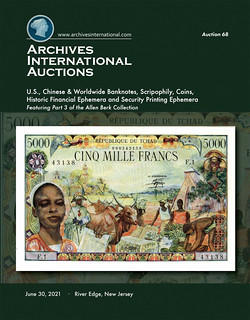 The June 30th, 2021 auction by Archives International Auctions is
highlighted by hundreds of rare and desirable banknotes rarely seen at auction. The Auction 68 catalog will consist of over 750 lots of rare and desirable U.S. & World Banknotes, Scripophily, Coins, Historic Financial Ephemera and Security Printing Ephemera.
The June 30th, 2021 auction by Archives International Auctions is
highlighted by hundreds of rare and desirable banknotes rarely seen at auction. The Auction 68 catalog will consist of over 750 lots of rare and desirable U.S. & World Banknotes, Scripophily, Coins, Historic Financial Ephemera and Security Printing Ephemera.
We are striving to offer our clients and friends items of historical and collecting interest that have been off the market for decades or are new to the collecting world
, stated Dr. Robert Schwartz, President of Archives International Auctions. Included in the upcoming auction is a wide variety of rare, interesting and desirable numismatic and historical objects to enhance the collections of every level of collector and dealer
.
DAVISSON'S E-AUCTION 40
Allan Davisson wrote this overview of his firm's upcoming E-Auction. I selected some lot images for illustration. -Editor
E-Auction 40, closing Wednesday, July 21st 2021, is online now! Print copies will be sent next week, if you are not on our mailing list and would like a copy please let us know.
Coins can take us to many different places—some unusual, some historic, some long-gone. This summer catalog has several numismatic vistas we have not offered any, or at least much of, before.
NUMISMATIC NUGGETS: JUNE 20, 2021
Here's a selection of interesting or unusual items I came across in the marketplace this week. Tell us what you think of some of these. -Editor
Louisiana (New France)- Banque Royale July 1, 1720 10 Livres Tournois PMG About Uncirculated 55.
This note was printed in France and issued by the Bank Royale in New Orleans. The embossed seal of the Banque Royale is at center. These notes were part of the famed "Mississippi Bubble" debacle involving Scottish financier/schemer John Law and land in New France. PMG mentions some pinholes.
From the Colonial Valley Collection, Part II
From the upcoming June 27 Heritage sale. -Editor
To read the complete lot description, see:
Louisiana (New France)- Banque Royale July 1, 1720 10 Livres Tournois PMG About Uncirculated 55.. ...
(https://currency.ha.com/itm/colonial-notes/georgia/louisiana-new-france-banque-royale-july-1-1720-10-livres-tournois-pmg-about-uncirculated-55/a/62187-96181.s)
Other topics this week include an Ernst August Constantin Ducat, and banknotes of the Central Bank of Manchou. -Editor
WAYNE'S NUMISMATIC DIARY: JUNE 20, 2021
Tuesday June 15th was the night of my Northern Virginia numismatic social group, Nummis Nova. Jon Radel was our host, and he chose Aracosia, an Afghan restaurant in McLean. Tom Kays was seated at our table when I arrived. We had a large section of the place to ourselves. Soon we were joined by Robert Hoppensteadt, my guest Daryl Haynor, Jon, Dave Schenkman, and Steve Bishop. Julian Leidman and Roger Burdette completed the group shortly afterward.
CAROLINGIAN SILVER COIN HOARD FOUND IN POLAND
Arthur Shippee and Pablo Hoffman passed along this article about a hoard of silver coins that may (or may not...) have been part of a ransom to save the city of Paris. -Editor
A hoard of silver coins minted in the Carolingian Empire about 1,200 years ago has been unearthed in northeastern Poland and may have been part of a historic ransom to save Paris from a Viking invasion.
It's the first time anyone has found so many Carolingian coins in Poland. Only three such coins — of a distinctive style with Latin inscriptions and a central crucifix — have been found in the country before now.
GOLD COINS BELIEVED LOST IN THE BLACK DEATH
Gold coins believed lost in the Black Death era are discussed in this BBC article passed along by Arthur Shippee. Found via The Explorator newsletter. To subscribe to Explorator, send a blank email message to: explorator+subscribe@groups.io. Aidan Work passed thids along as well. -Editor
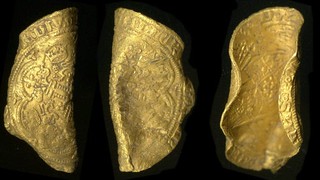 A "very rare" Edward III gold coin lost in the wake of the Black Death has been found by a metal detectorist.
A "very rare" Edward III gold coin lost in the wake of the Black Death has been found by a metal detectorist.
The 23-carat leopard was discovered with another gold coin, called a noble, near Reepham, Norfolk.
Finds liaison officer Helen Geake said the leopard was withdrawn within months of being minted in 1344 and "hardly any have survived".
ITALIAN NOBLE FAMILIES ON COINS
Baldwin's have published the second of a series of articles about Italian noble families on coins. Here's an excerpt - see the complete articles online for more. -Editor
In this blog series, we will explore the most famous Italian noble families of the Middle Ages and the Renaissance and their coins. We will look at how did they rose to power, what are their heraldic symbols and some of the coins we have in our collection. In this part, we will be looking at the Medici and Farnese families, which are synonymous with Renaissance power and art patronage.
MEDICI OF FLORENCE
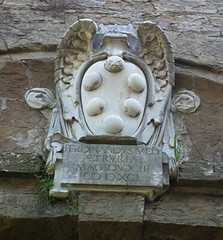 The Medici name is often a synonym for Renaissance in Italy and prolific art patronage. The House of Medici is known as a banking and political dynasty. They first came to prominence with Cosimo de' Medici in the Republic of Florence during the first half of the 15th century. There are different origin stories of how Medici came to power and where their heraldry is derived from them. The Medici coat of arms has five red balls and one blue on a gold shield. It is prominently displayed on buildings across Tuscany that had been funded by the family. The family gave four Popes to the Catholic Church and were distinguished patrons of Brunelleschi, Botticelli, Leonardo da Vinci, Michelangelo, Raphael, Machiavelli and Galileo, financing the construction of Saint Peter's Basilica in Rome and the cathedral of Santa Maria del Fiore in Florence.
The Medici name is often a synonym for Renaissance in Italy and prolific art patronage. The House of Medici is known as a banking and political dynasty. They first came to prominence with Cosimo de' Medici in the Republic of Florence during the first half of the 15th century. There are different origin stories of how Medici came to power and where their heraldry is derived from them. The Medici coat of arms has five red balls and one blue on a gold shield. It is prominently displayed on buildings across Tuscany that had been funded by the family. The family gave four Popes to the Catholic Church and were distinguished patrons of Brunelleschi, Botticelli, Leonardo da Vinci, Michelangelo, Raphael, Machiavelli and Galileo, financing the construction of Saint Peter's Basilica in Rome and the cathedral of Santa Maria del Fiore in Florence.
THE BOOK BAZARRE
TEACHERS GIVEN PANDEMIC MEMENTO TOKENS
Here in Northern Virginia, our school district gave challenge coins to teachers honoring their service during the pandemic. I can't blame them for preferring cash, thank you very much. -Editor
As the chaotic school year comes to a close, a handful of administrators and nurses were awarded sizable bonuses for working through the pandemic, leaving teachers reeling over their thank you
—a literal token.
Superintendent Scott Ziegler distributed challenge coins to all teachers as a memento for working through one of the most trying times in the district's history. With an ever-changing distance learning plan, social justice upheaval, and the eventual return to classrooms, teachers confronted unanticipated challenges and uncertainty daily.
HERO OF MANIPUR'S VICTORIA CROSS
Here's a press release from Dix Noonan Webb about an important Victoria Cross medal in their upcoming sale. -Editor
The unique and exceptional 1891 'Capture and Defence of Thobal' V.C. group of five awarded to 30-year-old Scotsman Lieutenant, later Colonel, C. J. W. Grant of the 12th Regiment (2nd Burma Battalion) Madras Infantry will be offered by Dix Noonan Webb in their live/ online auction of Orders, Decorations, Medals and Militaria on Wednesday, June 23, 2021 on their website www.dnw.co.uk. It is expected to fetch £300,000-400,000.
Charles James William Grant was born in Bourtie, Aberdeenshire in 1861, the son of Lieutenant-General P. C. S. St. J. Grant, and was educated privately and at the Royal Military College, Sandhurst. He was commissioned Lieutenant in the Suffolk Regiment on 10 May 1882, and joined the Madras Staff Corps in 1884. After a long military career, he spent his later years in Sidmouth in Devon, where he died in 1932, aged 71 years.
THE BANK OF ENGLAND'S NEW £50 BANKNOTE
The Telegraph published a nice interview with Sarah John of the Bank of England about their new £50 banknote. Here's a excerpt - see the complete article online. -Editor
You could be fooled into thinking cash is dying. Thousands of shops and restaurants have shunned physical currency in the last year, citing Covid safety concerns.
But the numbers tell a different story: the value of banknotes in circulation has risen by 10pc since the pandemic began. One woman who believes cash has a long life ahead of it is Sarah John, the Bank of England's chief cashier. Ms John's job encompasses everything from the design and production of notes, to the destruction of used money at the end of its life.
PENSACOLA PUB DECORATED IN CASH
This article highlights a Florida pub with walls festooned with paper money. -Editor
McGuire's Irish Pub is a popular restaurant and local landmark in Pensacola, Florida, famous for having an estimated two million dollars in cash hanging from the ceiling.
The history of McGuire's Irish Pub's unique decoration can be traced back to 1977, when Martin McGuire and his wife, Molly opened the opened the business.
He tended the bar while Molly waited tables, and when she made her first $1 tip, she celebrated by writing the date on it and tacking it to the back bar for good luck.
LOOSE CHANGE: JUNE 20, 2021
Here are some additional items in the media this week that may be of interest. -Editor
In a blog article this week, Stack's Bowers discusses a newly-discovered example of the 1794 dollar. -Editor
Stack's Bowers Galleries is excited to present a newly discovered 1794 Flowing Hair silver dollar in their official auction for the 2021 ANA World's Fair of Money this August. Discovered in an accumulation by a southern UK dealer over 25 years ago, this piece is a newcomer to the census of known examples and was only recently authenticated with the assistance of Stack's Bowers Galleries. It subsequently received a grade of AU-55 from NGC and approval by CAC, ranking it among the most significant survivors of this historic issue.
To read the complete article, see:
Newly Discovered 1794 Dollar to be Featured in the Stack's Bowers Galleries August ANA Auction
(https://www.stacksbowers.com/News/Pages/Blogs.aspx?ArticleID=1794-flowing-hair-silver-dollar-new-discovery-stacks-bowers-galleries)
Other topics this week include another floor tiled with pennies. -Editor

